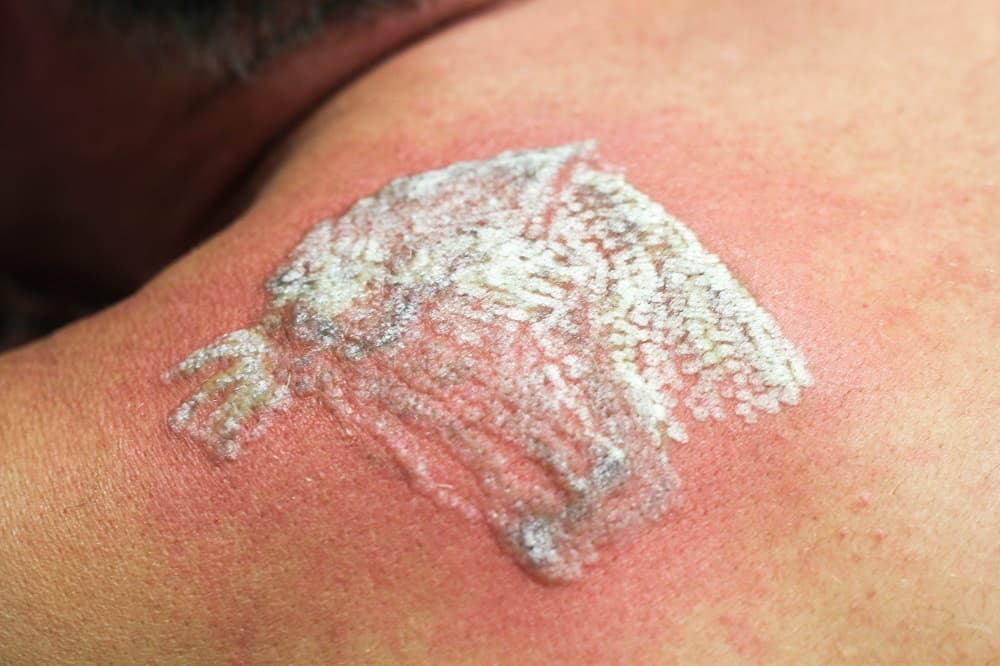Tattoo removal is a significant decision, and once you’ve gone through the process, proper aftercare is essential to ensure a smooth and speedy recovery. Whether you’ve chosen laser tattoo removal or another method, taking care of your skin post-treatment is crucial for optimal results and to minimize potential side effects. In this article, we’ll provide you with a comprehensive guide on tattoo removal aftercare, including tips to support your recovery journey.

Understanding the Tattoo Removal Process
Before we dive into aftercare, let’s briefly understand the tattoo removal process. Most tattoo removal methods work by breaking down the ink particles in your skin so your body can naturally eliminate them. The most common method is laser tattoo removal, which uses high-intensity light to target the tattoo ink.
Tattoo Removal Aftercare Tips
1. Follow Your Provider’s Advice
Your tattoo removal provider is your best source of information when it comes to aftercare. They will provide specific instructions tailored to your treatment, so make sure to follow their guidance. This may include details about dressing, cleaning, and moisturizing the treated area.
2. Keep the Area Clean
It’s important to keep the treated area clean to prevent infection. Use a mild, fragrance-free soap and lukewarm water to gently cleanse the area. Pat it dry with a clean, soft towel—avoid rubbing the area, as it may be sensitive.
3. Avoid Sun Exposure
Treated skin is more susceptible to damage from the sun’s UV rays. It’s crucial to keep the treated area covered and protected from direct sunlight. If you need to go
outside, apply a broad-spectrum sunscreen with SPF 30 or higher. Wearing protective clothing is also recommended.
4. Be Gentle
Tattoo removal can make your skin more sensitive, so avoid scrubbing the area or using abrasive skincare products. Treat the area gently to prevent irritation.
5. Don’t Pick or Scratch
Resist the temptation to pick, scratch, or rub the treated area. Doing so can slow down the healing process and increase the risk of scarring or infection.
6. Stay Hydrated
Drink plenty of water to keep your skin hydrated. Well-hydrated skin tends to heal more effectively. Proper hydration is essential for the body’s natural processes to flush out the broken-down ink particles.
7. Dress Comfortably
Wear loose-fitting clothing to avoid friction and irritation on the treated area. Tight or abrasive clothing can cause discomfort and delay healing.
8. Apply Topical Antibiotics (if recommended)
In some cases, your provider may recommend applying a topical antibiotic ointment to the treated area to prevent infection. If advised, follow the instructions provided.
9. Watch for Signs of Infection
While it’s essential to keep the treated area clean, watch for signs of infection, such as increased redness, swelling, pain, or pus. If you suspect an infection, contact your provider promptly.
10. Follow a Healthy Diet
Eating a balanced diet with plenty of fruits and vegetables can support your body’s natural healing processes. Nutrient-rich foods can help your skin recover more efficiently.
Potential Side Effects
Tattoo removal can lead to some side effects, which may vary depending on your skin type and the removal method used. Common side effects include:
- Redness: The treated area may appear red immediately after treatment, which should gradually fade.
- Swelling: Some swelling is normal, and it typically subsides within a few days.
- Blistering: Blisters may form, but it’s important not to pop them, as they help protect the skin as it heals.
- Crusting: The treated area might develop crusts, which should not be picked or removed prematurely.
- Scabbing: Scabs may form as the skin heals. Like blisters, do not pick or scratch them.
Time to Heal
Tattoo removal is a process that takes time. You may require multiple sessions to completely remove the tattoo, and healing can take several weeks between treatments. The body’s natural processes need time to eliminate the ink particles broken down during the procedure.
Conclusion
Tattoo removal aftercare is a crucial part of the process. By following these tips and paying attention to your provider’s instructions, you can help ensure a speedy recovery and minimize potential side effects. Remember that results may vary depending on the tattoo’s size, ink colors, and your skin type. Always consult with a reputable tattoo removal provider who can guide you through the process and support you in achieving your desired outcome.
If you’re in the business of tattoo removal and looking for advanced laser technology solutions, consider partnering with Pioneer Laser Tech Co. We offer state-of-the-art laser systems designed to meet the diverse needs of your clients and provide effective tattoo removal treatments. Contact us to learn more about our innovative laser solutions and how they can benefit your business.
